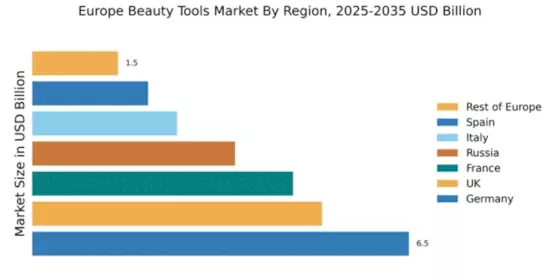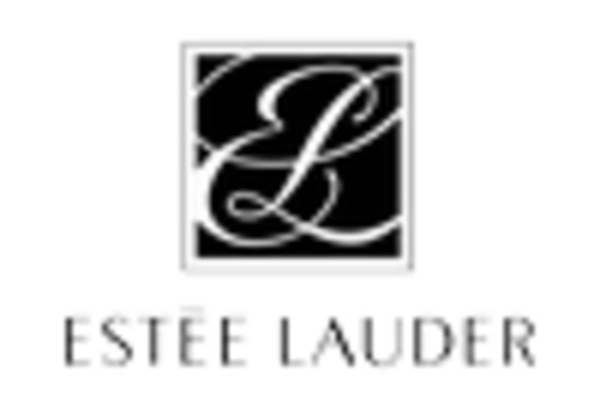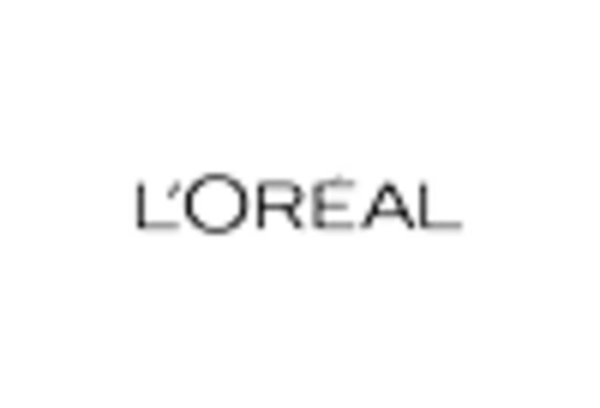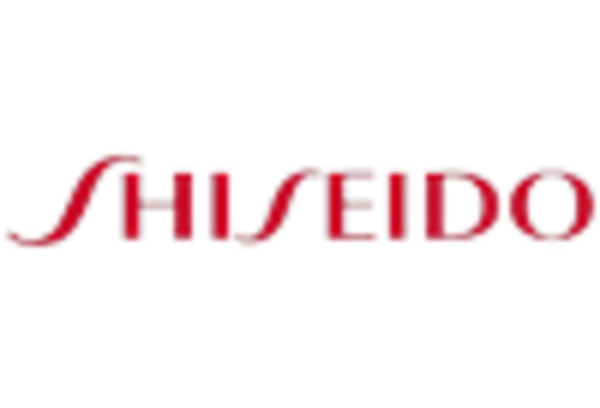E-commerce Growth
The beauty tools market in Europe is significantly influenced by the rapid growth of e-commerce platforms. With the increasing preference for online shopping, consumers are more inclined to purchase beauty tools through digital channels. In 2025, e-commerce sales in the beauty sector are expected to account for over 30% of total sales, reflecting a shift in consumer behavior. This trend is further supported by the convenience and accessibility that online shopping offers, allowing consumers to explore a wider range of products. Additionally, the rise of social media marketing and targeted online advertising is enhancing brand visibility, thereby attracting more consumers to the beauty tools market.
Rising Disposable Incomes
In Europe, the beauty tools market is benefiting from rising disposable incomes among consumers. As individuals have more financial flexibility, they are increasingly willing to invest in high-quality beauty tools that promise better results. The average disposable income in several European countries has seen an increase of approximately 3.2% annually, which correlates with a heightened interest in premium beauty products. This trend is particularly evident in urban areas where consumers prioritize personal grooming and self-care. Consequently, the beauty tools market is likely to expand as consumers seek innovative and effective tools that enhance their beauty routines, thereby driving sales and market growth.
Health and Wellness Trends
The growing emphasis on health and wellness is shaping the beauty tools market in Europe. Consumers are increasingly seeking tools that not only enhance beauty but also promote overall well-being. This trend is reflected in the rising popularity of tools designed for facial massage, skin rejuvenation, and relaxation. The market for wellness-oriented beauty tools is projected to grow by approximately 5% annually, as consumers prioritize self-care routines that contribute to mental and physical health. This shift indicates a broader understanding of beauty that encompasses holistic health, thereby expanding the consumer base for beauty tools that align with these values.
Technological Advancements
The beauty tools market in Europe is experiencing growth due to rapid technological advancements. Innovations such as smart beauty devices, which integrate artificial intelligence and app connectivity, are transforming consumer experiences. For instance, tools that analyze skin conditions and recommend personalized skincare routines are gaining traction. The market for beauty tools is projected to grow at a CAGR of 7.5% from 2025 to 2030, indicating a robust demand for technologically enhanced products. Furthermore, the integration of sustainable materials in manufacturing processes is becoming increasingly prevalent, appealing to environmentally conscious consumers. This trend not only enhances product functionality but also aligns with the growing consumer preference for eco-friendly solutions.
Diverse Consumer Preferences
The beauty tools market in Europe is characterized by diverse consumer preferences. These preferences are driving innovation and product development. As consumers become more discerning, they seek tools that cater to specific needs, such as skin type, age, and personal style. This demand for customization is prompting brands to develop a wider array of products, including specialized tools for different beauty routines. Market Research Future indicates that approximately 40% of consumers express a preference for personalized beauty solutions, suggesting a significant opportunity for brands to differentiate themselves. This diversity in consumer preferences is likely to foster competition and innovation within the beauty tools market.


















Leave a Comment